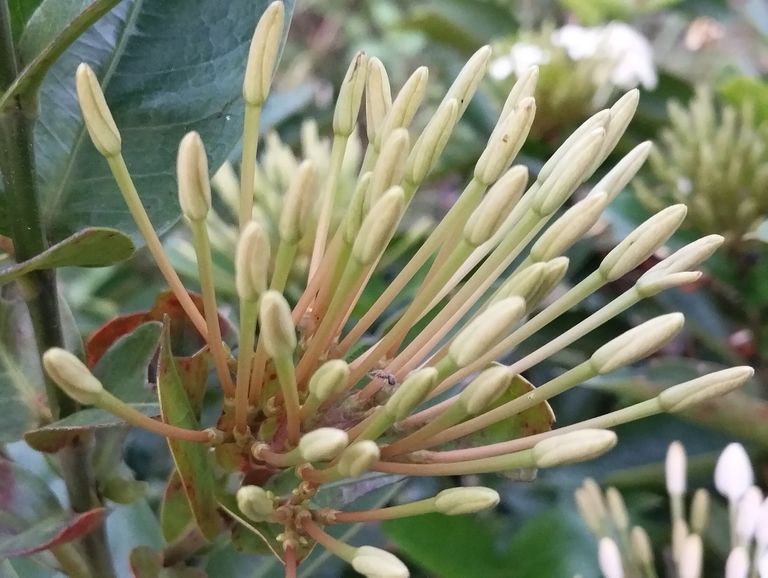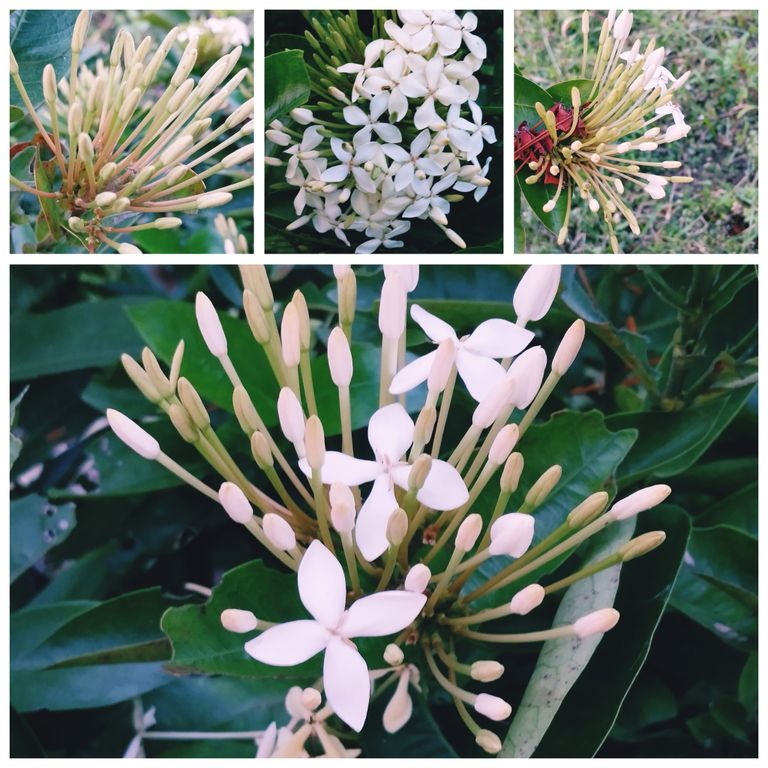
Creating a White Rangoon Flower Garden: A Step-by-Step Guide.
A Rangoon flower garden, especially one featuring the white variant, is a serene and elegant addition to any outdoor space. The white Rangoon flower, known for its delicate petals and enchanting fragrance, can transform your garden into a peaceful retreat. This blog will guide you through the essential steps to create and maintain a beautiful white Rangoon flower garden.
Introduction to Rangoon Flowers (Rangoon Creeper)
The Rangoon flower, also known as Quisqualis indica, is a climbing vine native to tropical regions. It produces clusters of beautiful, tubular flowers that bloom in various shades, including white. These flowers not only add aesthetic value but also attract pollinators like bees and butterflies.
The white Rangoon flower is particularly popular for its purity and simplicity, symbolizing peace and calm. Its creeping nature makes it ideal for creating a vertical garden or a natural floral canopy.
Why Choose White Rangoon Flowers for Your Garden?
Aesthetic Appeal: White flowers exude elegance and can complement any garden theme, whether modern or traditional.
Fragrance: These flowers are known for their sweet scent, which intensifies in the evening, making your garden a tranquil space to relax.
Easy to Grow: Rangoon flowers are relatively low-maintenance and thrive in various soil conditions, making them perfect for both novice and experienced gardeners.
Attract Pollinators: These flowers are known to attract beneficial insects like bees, contributing to the overall health of your garden ecosystem.
Step-by-Step Guide to Creating a White Rangoon Flower Garden
- Planning Your Garden Layout
Before you start planting, it’s essential to plan the layout of your garden. The white Rangoon flower is a climber, so you’ll need structures like trellises, fences, or pergolas to support the vine as it grows.
Choose a Location: Rangoon flowers thrive in areas with ample sunlight. Make sure the location you choose receives at least 6-8 hours of direct sunlight daily.
Prepare Support Structures: Since the white Rangoon is a climbing plant, you’ll need to install trellises, fences, or pergolas for the vines to climb on. This not only helps the plant grow but also creates a beautiful vertical display.
- Soil Preparation
Rangoon flowers prefer well-drained, loamy soil that is rich in organic matter. Proper soil preparation is crucial for the healthy growth of your plants.
Test the Soil: You can test the pH of the soil to ensure it's slightly acidic to neutral (pH 6-7). This is the ideal range for Rangoon flowers.
Amend the Soil: If your soil is heavy or clay-like, mix in some sand or organic compost to improve drainage. Well-drained soil prevents water from stagnating, which could harm the roots.
- Planting White Rangoon Flowers
Once your soil is ready, it's time to plant your white Rangoon flowers. You can either grow them from seeds, cuttings, or purchase seedlings from a nursery.
Planting Time: The best time to plant is during the early spring or late summer when the temperature is moderate.
Spacing: If planting multiple Rangoon vines, space them about 6-8 feet apart to allow ample room for the vines to spread.
Watering: After planting, water the seedlings generously. Ensure the soil remains moist but not waterlogged, especially during the first few weeks as the plant establishes itself.
- Caring for Your Rangoon Flower Garden
The beauty of a Rangoon flower garden lies in its vibrant and healthy growth, which can be achieved through regular care and maintenance.
Watering: Rangoon flowers require moderate watering. Ensure that the soil is kept moist, especially during dry spells, but avoid overwatering, as this can lead to root rot.
Fertilizing: Feed your plants with a balanced fertilizer every 4-6 weeks during the growing season. Organic options like compost or manure work well to enrich the soil with essential nutrients.
Pruning: To keep the vines healthy and prevent overcrowding, prune your Rangoon plants regularly. Trim away dead or damaged vines, and shape the plant as desired. Regular pruning also encourages more flowers to bloom.
Pest and Disease Control: Keep an eye out for common pests like aphids and caterpillars. You can use organic insecticides or neem oil to keep your plants pest-free. Ensure proper air circulation around the vines to prevent fungal diseases.
- Enhancing the Beauty of Your Garden
A white Rangoon flower garden is a sight to behold, but there are ways to enhance its beauty further.
Mix with Other Flowers: Pair the white Rangoon with other flowering plants in complementary shades like lavender, blue, or even other colors of Rangoon flowers. This creates a stunning contrast while maintaining the peaceful aesthetic of the garden.
Lighting: Consider adding garden lights to illuminate your Rangoon flowers at night. Soft lighting will highlight the delicate white petals and create a magical atmosphere in your garden.
Garden Décor: Incorporate decorative elements like garden benches, stone pathways, or water features to add a charming touch to your space. These features can complement the natural beauty of the Rangoon flowers, creating a tranquil and inviting garden.
Common Mistakes to Avoid
While Rangoon flowers are relatively easy to grow, there are a few common mistakes that gardeners should avoid:
Overwatering: Rangoon flowers don’t like soggy soil, so be cautious of overwatering. Ensure that the soil drains well to avoid root rot.
Insufficient Sunlight: These plants require plenty of sunlight to bloom profusely. Planting them in a shady spot will hinder their growth and flowering potential.
Ignoring Pruning: Without regular pruning, Rangoon vines can become unruly and overcrowded. This not only affects the aesthetic of your garden but can also reduce the number of blooms.
Seasonal Care Tips
Spring: This is the ideal time to plant new Rangoon flowers. Make sure to prepare your soil and plant before the heat of summer sets in.
Summer: Water your plants regularly during hot weather, but be cautious of overwatering. Ensure they receive plenty of sunlight to encourage blooming.
Fall: Prune the plants after the blooming season ends to prepare them for dormancy. Fall is also a good time to enrich the soil with organic compost for the next growing season.
Winter: Rangoon flowers may go dormant during winter, especially in cooler climates. In areas with frost, cover the base of the plants with mulch to protect the roots from freezing temperatures.
Conclusion
A white Rangoon flower garden is a beautiful and tranquil addition to any home. With its elegant flowers and fragrant blooms, it can transform your outdoor space into a peaceful haven. By following these steps—from choosing the right location to providing proper care—you can create and maintain a thriving garden that brings joy and serenity year-round.
Whether you're a seasoned gardener or a beginner, growing white Rangoon flowers is a rewarding experience. With the right care, your garden will not only look stunning but also serve as a sanctuary for you and the pollinators it attracts. Happy gardening.
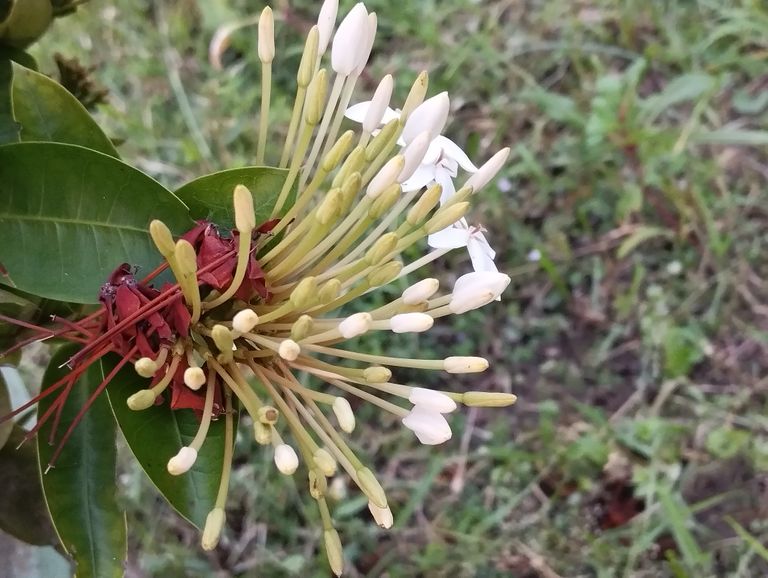
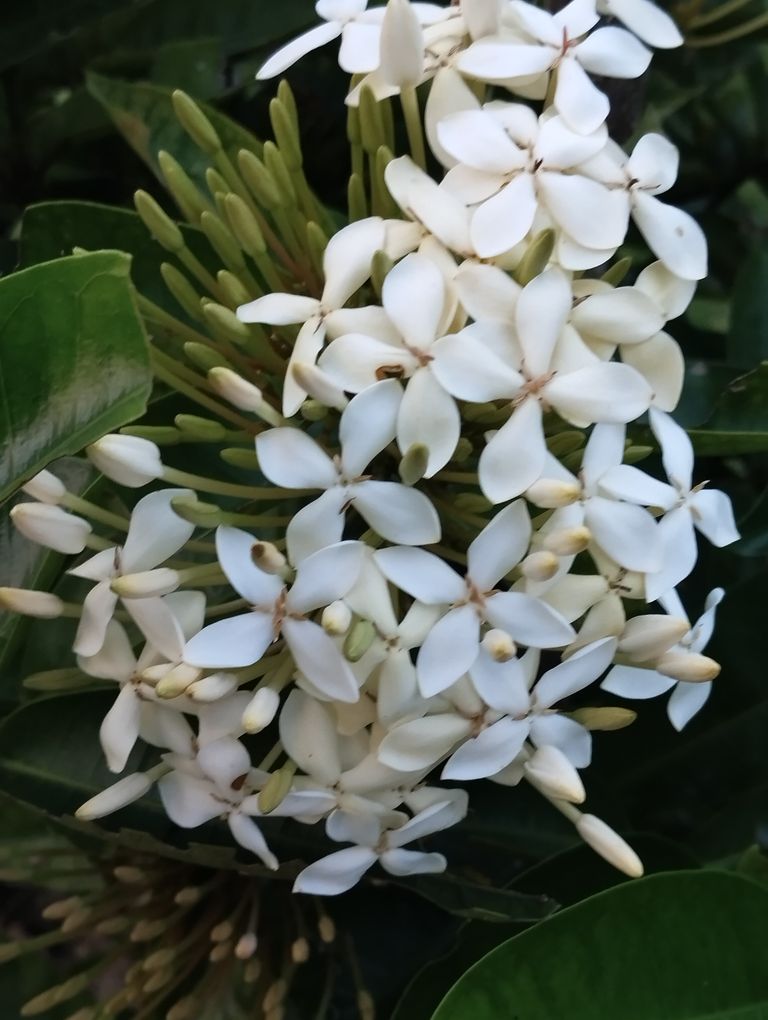
Taking Care of Common Virtues: A Guide to Cultivating Personal Growth
Virtues are the cornerstone of a meaningful life, shaping our behavior, decisions, and interactions. They are qualities that define who we are and how we live. Common virtues like honesty, kindness, patience, and humility are essential to personal growth and maintaining healthy relationships. But like all aspects of our character, they need to be nurtured and cared for. This blog will explore how to take care of these virtues, ensuring they continue to grow and enrich our lives.
- Honesty: The Foundation of Trust
Honesty is often regarded as the most important virtue. It builds trust, fosters openness, and promotes genuine relationships. Taking care of honesty involves more than just telling the truth; it requires practicing integrity in all aspects of life.
How to Nurture Honesty:
Self-awareness: Regularly reflect on your actions and decisions. Are they aligned with your values? Being honest with yourself is the first step.
Avoid White Lies: It’s tempting to tell small lies to avoid conflict, but even these can erode trust over time. Practice transparency, even when the truth is uncomfortable.
Encourage Honest Feedback: Surround yourself with people who value honesty. This creates an environment where truth is appreciated and practiced openly.
By continuously reflecting on your actions and being transparent, you reinforce honesty as a core part of your identity.
- Kindness: The Power of Compassion
Kindness is an act of empathy and care towards others. It’s a virtue that benefits both the giver and the receiver. However, in a busy and competitive world, we often forget to be kind to others—and ourselves.
How to Take Care of Kindness:
Practice Active Listening: Pay attention when someone is speaking. Genuine kindness comes from understanding others’ needs and offering support.
Perform Random Acts of Kindness: Small, unexpected gestures, like complimenting a colleague or helping a neighbor, reinforce kindness as a habit.
Be Kind to Yourself: Self-compassion is key to cultivating kindness. If you’re harsh on yourself, it’s harder to extend kindness to others. Acknowledge your flaws, but also celebrate your strengths.
Remember, kindness is not about grand gestures, but consistency in showing empathy and care in everyday life.
- Patience: Mastering the Art of Waiting
Patience is the ability to tolerate delay, difficulty, or frustration without becoming angry or upset. It’s often tested in our fast-paced world, where instant gratification is expected. However, patience is crucial for long-term success and maintaining emotional balance.
Ways to Foster Patience:
Practice Mindfulness: Being present in the moment helps you manage frustration and anxiety. Meditation or deep breathing exercises can improve your ability to stay calm.
Set Realistic Expectations: Impatience often stems from expecting too much too soon. Learn to pace yourself and appreciate gradual progress.
Learn from Delays: Instead of seeing waiting as a waste of time, view it as an opportunity to reflect or plan. Delays can teach us the value of persistence and resilience.
Cultivating patience allows you to approach challenges with a clear mind and a calm demeanor, leading to more thoughtful decisions.
- Humility: The Strength in Being Modest
Humility is about recognizing your limitations and being open to learning from others. It prevents arrogance and fosters a sense of community, as it encourages collaboration and mutual respect.
How to Cultivate Humility:
Accept Criticism Gracefully: Humility allows you to receive feedback without becoming defensive. Use criticism as a tool for growth.
Acknowledge Others’ Contributions: Whether in personal or professional settings, give credit to those who help you succeed. Humility shines when you lift others up.
Stay Grounded: No matter your achievements, remind yourself that there’s always room for improvement. Regular self-reflection helps maintain a humble attitude.
Humility is the virtue that keeps our egos in check and reminds us that we are all part of something bigger than ourselves.
- Gratitude: Acknowledging the Good in Life
Gratitude is the practice of recognizing and appreciating the good things in life. It’s not just a fleeting emotion but a habit that can transform your perspective, making you more positive and resilient.
How to Grow Gratitude:
Keep a Gratitude Journal: Each day, write down at least three things you’re grateful for. This helps you focus on the positive, even during tough times.
Express Thanks Often: Whether it’s a simple “thank you” or a heartfelt note, expressing gratitude strengthens relationships and encourages a positive atmosphere.
Shift Focus to What You Have: Instead of dwelling on what you lack, make it a habit to focus on what you do have. This shift in mindset can reduce stress and increase happiness.
Gratitude helps us see the beauty in everyday moments and fosters a deeper appreciation for life’s blessings.
- Courage: The Willingness to Act
Courage is often associated with heroic acts, but in everyday life, it’s about standing up for what’s right, taking risks, and facing fears. Taking care of courage means building resilience and learning to act in the face of fear.
Steps to Strengthen Courage:
Face Your Fears: Start by confronting small fears, and gradually work your way up to bigger challenges. Each step forward builds confidence.
Stand Up for Your Beliefs: Courage involves defending what you believe in, even if it’s unpopular. Practice voicing your opinions respectfully but firmly.
Embrace Failure: Failure is a natural part of life. Instead of avoiding risks, learn from your failures and see them as opportunities for growth.
Courage enables you to take action despite uncertainty, opening the door to new possibilities and growth.
- Responsibility: Owning Your Actions
Responsibility is about being accountable for your actions, decisions, and their consequences. It reflects maturity and reliability. Caring for this virtue involves consistently honoring commitments and being aware of the impact of your choices.
How to Foster Responsibility:
Own Your Mistakes: Everyone makes mistakes, but owning up to them is a sign of strength. Learn from your errors and work to correct them.
Prioritize Commitments: Be mindful of your promises. Taking on too much can lead to failure in delivering. Focus on what’s important and manage your time effectively.
Think Long-Term: Responsibility requires considering the long-term effects of your actions. Before making decisions, think about how they will affect others and your future.
Responsibility fosters trust and respect, and it’s a key component of any successful relationship, whether personal or professional.
Conclusion
Caring for common virtues is a lifelong journey that requires consistent effort and self-reflection. By nurturing honesty, kindness, patience, humility, gratitude, courage, and responsibility, you not only improve your own character but also positively impact the world around you. These virtues serve as the foundation for personal growth, fulfilling relationships, and a more meaningful life.
As you continue on your journey, remember that virtues are not fixed traits but qualities that can be developed and strengthened over time. Through practice, reflection, and mindfulness, you can ensure that these virtues become integral parts of who you are, guiding you toward a life of purpose and fulfillment.
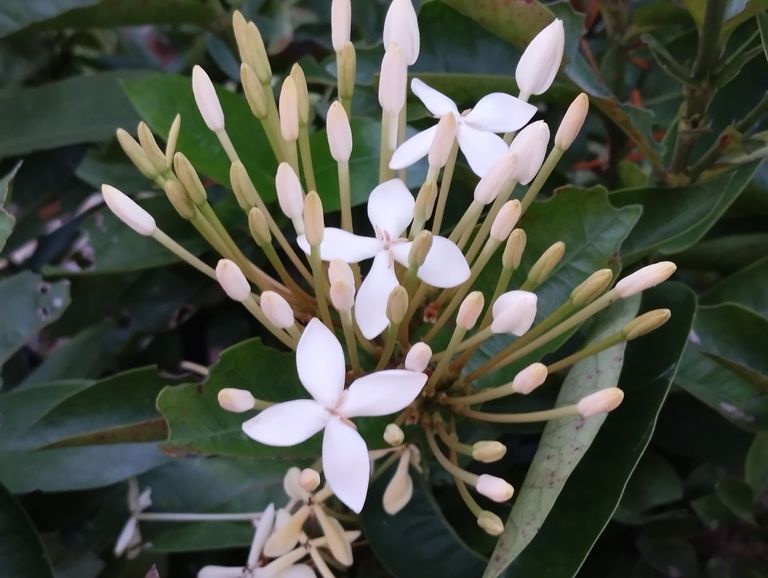
White Ixora Flower (Rangan) and Weed Control: A Comprehensive Guide
Ixora coccinea, commonly known as the white Rangan flower, is a beautiful flowering shrub that belongs to the Rubiaceae family. Native to tropical regions, the white Rangan flower is cherished for its clusters of small, star-shaped blossoms that create a stunning display in gardens and landscapes. The white variant, with its delicate and pristine petals, is especially favored for ornamental purposes. However, like any garden, the presence of weeds can pose a significant threat to the healthy growth of these flowers. This blog will delve into the significance of white Ixora, common weeds that threaten its growth, and effective weed control methods to ensure a healthy and thriving garden.
Introduction to White Ixora (Rangan) Flower
White Ixora flowers are versatile and can be grown in gardens, parks, and even in pots. These evergreen shrubs are known for their ability to bloom year-round in tropical climates, making them a popular choice among gardeners. The flowers come in various colors, including red, pink, yellow, and white, with the latter being the subject of our focus. The white Ixora’s pure hue adds a touch of elegance to any garden, and its compact size makes it perfect for hedges, borders, or standalone decorative pieces.
Despite their beauty, these flowers are not immune to the challenges posed by weeds. Weeds not only compete with the plant for nutrients, sunlight, and water but can also harbor pests and diseases that may affect the Ixora’s growth. Therefore, understanding weed control is essential for maintaining the health and vibrancy of the white Rangan flower.
Common Weeds that Threaten White Ixora
Before diving into weed control methods, it is important to recognize the common weeds that can invade Ixora gardens. Some of the most notorious weeds that compete with the white Ixora include:
- Crabgrass (Digitaria spp.): This fast-growing weed can quickly take over garden spaces, depriving Ixora plants of vital nutrients.
- Dandelions (Taraxacum officinale): While dandelions are often considered attractive in their own right, they are aggressive competitors for water and nutrients.
- Nutsedge (Cyperus spp.): Known for its resistance to many control methods, nutsedge can grow rapidly, overshadowing Ixora plants.
- Bindweed (Convolvulus arvensis): This vine-like weed can smother Ixora shrubs, hindering their access to sunlight and causing stress.
- Bermuda Grass (Cynodon dactylon): An invasive grass that spreads quickly, Bermuda grass can choke out garden plants if not controlled.
Each of these weeds poses unique challenges, and understanding their growth habits is the first step to effectively controlling them in your garden.
Why Weed Control is Essential
Weeds are not just unsightly; they can cause significant damage to the health of your white Ixora plants. Here are a few reasons why weed control is crucial:
Nutrient Competition: Weeds consume the same nutrients from the soil as the Ixora plant. If left unchecked, they can starve your plants of essential nutrients like nitrogen, potassium, and phosphorus.
Water Competition: Weeds are often more aggressive than garden plants in absorbing water, which can leave your Ixora flowers dehydrated, especially during dry periods.
Light Obstruction: Some weeds grow tall or spread wide, casting shadows on your Ixora shrubs. This can limit the sunlight your plants receive, hindering their growth and flowering.
Disease and Pests: Many weeds harbor diseases or pests that can transfer to your Ixora plants, leading to further damage or even plant death.
For these reasons, controlling weeds is vital to ensure that your white Ixora flowers thrive.
Effective Weed Control Methods for White Ixora Gardens
There are several methods to control weeds in a garden with white Ixora flowers. Each method has its own benefits, and often, a combination of approaches works best.
- Manual Weeding
Manual weeding is one of the most straightforward and effective ways to remove weeds from your garden. Using tools like a hand hoe or a weed puller, you can physically remove weeds, ensuring that their roots are also pulled out. This method is best used for small gardens or when dealing with isolated patches of weeds.
Pros: Immediate results, no chemicals involved.
Cons: Time-consuming, labor-intensive, and may not be feasible for large areas.
- Mulching
Mulching is a highly effective way to suppress weed growth while also providing benefits to your Ixora plants. Organic mulch (such as wood chips, straw, or grass clippings) is spread around the base of the plants. Mulch acts as a barrier, preventing weed seeds from receiving sunlight, which they need to germinate.
Pros: Suppresses weeds, retains soil moisture, improves soil quality.
Cons: Needs to be replenished over time, may harbor pests if applied too thickly.
- Herbicides
Herbicides are chemical solutions designed to kill weeds. There are two main types of herbicides:
Pre-emergent herbicides: These prevent weed seeds from germinating and are best applied in early spring before the weeds start to grow.
Post-emergent herbicides: These are used to kill existing weeds. Care must be taken when using post-emergent herbicides to avoid harming the Ixora plants.
Pros: Highly effective for large-scale weed control.
Cons: May harm beneficial plants or insects if not applied correctly, can be expensive, and might pose environmental concerns.
- Soil Solarization
Soil solarization is an eco-friendly method of controlling weeds by using the sun’s heat to kill weed seeds and pathogens in the soil. This process involves covering the soil with a transparent plastic sheet during the hot months. The heat generated under the plastic effectively kills weed seeds.
Pros: Environmentally friendly, effective at killing weeds and soil-borne pathogens.
Cons: Takes time (several weeks), and may not be practical for small areas or during cooler months.
- Weed Barriers
Using weed barriers, such as landscape fabric, can prevent weeds from emerging in your garden. These barriers are placed under mulch or soil and physically block weeds from growing while still allowing water and nutrients to reach the Ixora plants.
Pros: Long-lasting, effective in preventing weeds.
Cons: Can be costly, may require cutting for planting, and can degrade over time.
- Companion Planting
Companion planting involves growing plants that naturally repel weeds or inhibit their growth. Some plants, like marigolds and thyme, release chemicals into the soil that can deter weed growth. Companion planting not only helps control weeds but can also enhance the health of your Ixora plants by attracting beneficial insects and improving soil fertility.
Pros: Natural and eco-friendly, improves garden biodiversity.
Cons: Requires planning and knowledge of plant pairings.
Maintaining a Weed-Free Ixora Garden
Once you’ve implemented weed control measures, maintaining a weed-free environment is essential for the long-term health of your Ixora garden. Here are some maintenance tips:
Regular Monitoring: Keep an eye on your garden and remove weeds as soon as they appear. Early intervention can prevent them from spreading.
Proper Watering: Water your Ixora plants directly at the base to avoid giving water to nearby weeds.
Soil Health: Maintain healthy soil by adding compost or organic matter, which can improve the resilience of your Ixora plants and make it harder for weeds to thrive.
Clean Tools: Ensure that your gardening tools are clean to avoid spreading weed seeds from one area to another.
Conclusion
White Ixora flowers are a delightful addition to any garden, but like all plants, they require proper care to thrive. Weeds, if left uncontrolled, can damage the health and beauty of your Ixora plants. By employing a combination of manual weeding, mulching, herbicides, soil solarization, and other methods, you can effectively control weeds and create a thriving environment for your white Rangan flowers. With the right care, your garden will bloom with vibrant, healthy flowers, free from the stress of invasive weeds.
